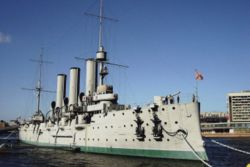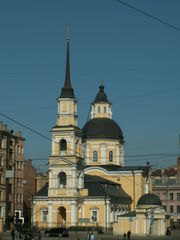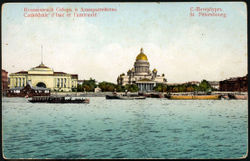Tsar Peter The Great founded the city on May 27, 1703 after reconquering the Ingrian land from Sweden. He named it after his patron saint, the apostle Saint Peter.
The building of this new city under adverse weather and geographical conditions, and the high mortality rate that went with it, required a constant supply of new workers. Since inhabitants in the area were few and far between, Peter drafted forced labor from all parts of the country. Since construction began during a time of war, the new city's first building was a fortification.
Alexander II's emansipation of the serfs (1861) caused the influx of large numbers of poor into the city. By the end of the century, St Petersburg had grown up into one of the largest industrial hubs in Europe. With the growth of industry, radical movements were also astir. The Revolution of 1905 began here and spread rapidly into the provinces. During World War I, on the initiative of Tsar Nicholas II, the city was renamed Petrograd.
1917 saw the beginnings of the Russian Revolution. The city's proximity to anti-revolutionary armies, and generally unstable political climate, forced Vladimir Lenin to flee to Russia's historic former capital at Moscow. After Lenin's death, Petrograd was renamed Leningrad in his honor.
During World War II, Leningrad was surrounded and besieged by the German Wehrmacht in the Siege of Leningrad. For the heroic tenacity of the city's population, Leningrad became the first Soviet city to be awarded the title Hero City.
After the collapse of the Soviet Union, a majority (54%) of the population decided to restore "the original name, Saint Petersburg." As well as the city, 39 streets, six bridges, three Saint Petersburg Metro stations and six parks were renamed.


